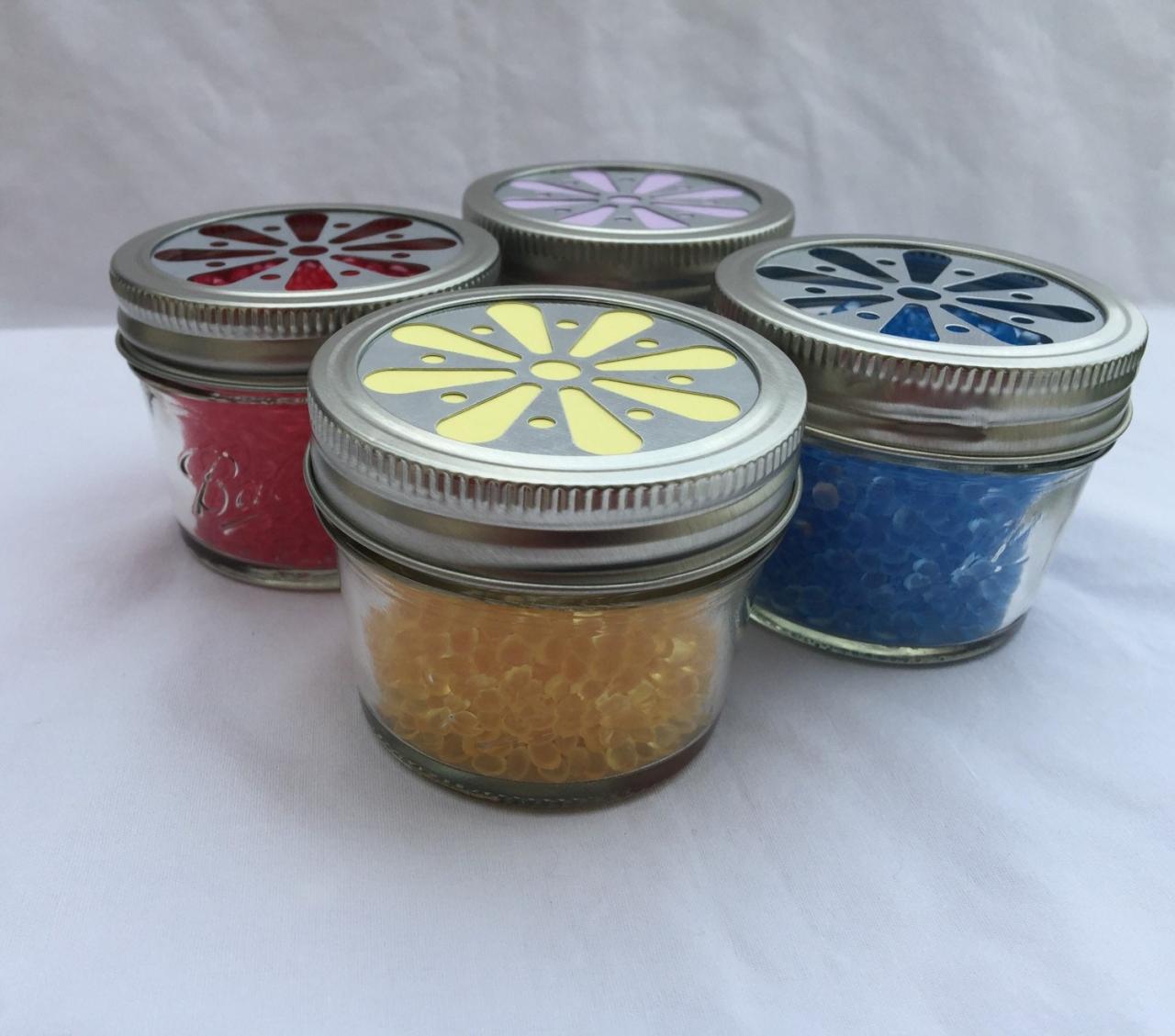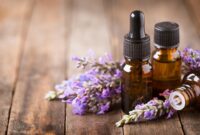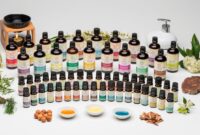Aromatherapy beads, a harmonious blend of ancient healing practices and modern convenience, offer a captivating journey into the realm of holistic well-being. Each bead, infused with the essence of nature’s purest oils, becomes a personal sanctuary, releasing therapeutic benefits that soothe the mind, body, and soul.
From stress relief to enhanced sleep and mood elevation, the therapeutic powers of aromatherapy beads are both profound and versatile. Whether worn as elegant jewelry, placed in a tranquil diffuser, or added to a relaxing bath, these aromatic companions provide a subtle yet transformative experience.
Understanding Aromatherapy Beads

Aromatherapy is a holistic healing practice that uses essential oils to promote relaxation, improve mood, and alleviate physical ailments. Aromatherapy beads are a convenient way to enjoy the benefits of aromatherapy on the go.
Aromatherapy beads are typically made from porous materials such as lava rock, wood, or ceramic. These materials can absorb essential oils and slowly release their fragrance over time. Aromatherapy beads come in a variety of shapes and sizes, including round, square, and rectangular.
They can also be plain or decorated with designs.
Types of Aromatherapy Beads
- Lava rock beadsare made from volcanic rock and are highly porous. They can absorb and hold a large amount of essential oil, making them a good choice for long-lasting aromatherapy.
- Wood beadsare made from natural wood and have a more rustic appearance. They are less porous than lava rock beads, so they will not hold as much essential oil. However, they are still a good choice for aromatherapy and can be used to create a variety of different looks.
- Ceramic beadsare made from clay and are fired in a kiln. They are non-porous, so they will not absorb essential oils. However, they can be used to diffuse essential oils by placing them in a diffuser or on a hot plate.
Essential Oils for Aromatherapy Beads
There are many different essential oils that can be used in aromatherapy beads. Some of the most popular include:
- Lavender: Promotes relaxation and sleep
- Peppermint: Invigorates and improves focus
- Eucalyptus: Clears congestion and promotes respiratory health
- Tea tree: Antibacterial and antifungal properties
- Lemon: Uplifting and mood-boosting
Benefits of Aromatherapy Beads
Aromatherapy beads are small, porous beads infused with essential oils. When heated or exposed to air, the beads release the oils’ aroma, which can provide a variety of therapeutic benefits.
Stress Relief
The calming scents of essential oils like lavender and chamomile have been shown to reduce stress and anxiety. Studies have found that inhaling these aromas can lower cortisol levels, a hormone associated with stress.
Improved Sleep
Certain essential oils, such as valerian and ylang-ylang, have sedative properties that can promote relaxation and improve sleep quality. Aromatherapy beads can be placed on a bedside table or diffused in the bedroom to create a calming atmosphere.
Mood Enhancement
Essential oils like citrus and peppermint have uplifting and energizing effects. Inhaling these scents can boost mood, reduce fatigue, and improve cognitive function.
Specific Ailments
Aromatherapy beads can also be used to alleviate specific ailments, such as:
- Headaches:Peppermint or eucalyptus oil can relieve tension headaches.
- Anxiety:Lavender or chamomile oil can calm anxiety and promote relaxation.
- Nausea:Ginger or peppermint oil can help reduce nausea and vomiting.
Using Aromatherapy Beads

Incorporating aromatherapy beads into your daily routine can be a simple and effective way to experience the benefits of aromatherapy. Here are some practical ways to use aromatherapy beads for optimal results:
Wearing as Jewelry:Stringing aromatherapy beads onto a necklace or bracelet allows you to carry the benefits of essential oils with you throughout the day. The beads will gradually release the aroma as you move, providing a subtle and consistent therapeutic effect.
Placing in a Diffuser:Adding a few aromatherapy beads to a diffuser disperses the essential oil molecules into the air, creating an aromatic environment. This method is ideal for larger spaces or when you want to enjoy the benefits of aromatherapy in a shared space.
Adding to Bathwater:Adding aromatherapy beads to your bathwater infuses the water with the desired essential oil aroma. The warm water helps release the fragrance, creating a relaxing and therapeutic bathing experience.
Optimal Frequency and Duration:The frequency and duration of aromatherapy bead use depend on your individual needs and preferences. It is generally recommended to start with short intervals (e.g., 15-30 minutes) and gradually increase the duration as desired. If you experience any irritation or discomfort, discontinue use immediately.
Choosing the Right Aromatherapy Beads
Selecting the ideal aromatherapy beads requires careful consideration of several factors, including personal preferences, intended use, and compatibility with essential oils. The material, size, and shape of the beads also play crucial roles in optimizing their effectiveness.
When choosing the material for your aromatherapy beads, consider factors such as durability, porosity, and aesthetic appeal. Common materials include wood, lava rock, and ceramic, each offering unique properties. Wood beads, for instance, are lightweight and porous, allowing for better absorption and diffusion of essential oils.
Lava rock beads are highly porous and can retain heat, making them suitable for use with heat-based aromatherapy techniques.
Size and Shape
The size and shape of the beads can influence the intensity and duration of the aromatherapy experience. Smaller beads tend to have a more subtle scent release, while larger beads can hold more essential oil and diffuse it for a longer period.
Round beads are versatile and can be used in various applications, while irregularly shaped beads may provide a more tactile experience.
Choosing the Right Essential Oils
The choice of essential oils is equally important to ensure the desired therapeutic benefits. Consider the specific therapeutic properties of each essential oil and select those that align with your intended use. For instance, lavender oil is known for its calming and relaxing effects, while peppermint oil is energizing and invigorating.
Creating Aromatherapy Beads

Creating custom aromatherapy beads is a simple and enjoyable process that allows you to personalize your beads with unique designs and scents. With the right materials and techniques, you can easily craft beautiful and fragrant beads that will provide you with the benefits of aromatherapy wherever you go.
Choosing the Right Materials
The first step in creating aromatherapy beads is to choose the right materials. The most common materials used for aromatherapy beads are lava rock, wood, and ceramic. Lava rock is a porous material that absorbs and retains essential oils well, making it a great choice for aromatherapy beads.
Wood is another popular choice, as it is lightweight and durable. Ceramic beads are also a good option, as they are non-porous and can be glazed in a variety of colors.
Choosing Essential Oils
Once you have chosen the right materials, you need to choose the essential oils that you want to use. Essential oils are highly concentrated plant oils that have a variety of therapeutic properties. Some popular essential oils for aromatherapy beads include lavender, peppermint, eucalyptus, and rosemary.
You can choose one essential oil or blend several oils together to create a custom scent.
Creating the Beads
Once you have chosen your materials and essential oils, you can start creating your aromatherapy beads. There are a few different techniques that you can use to create beads, including:
- Rolling:This is the simplest technique for creating beads. Simply roll a piece of clay or dough into a ball and then poke a hole through the center.
- Extruding:This technique uses a clay extruder to force clay through a die, creating beads of uniform size and shape.
- Casting:This technique involves pouring liquid clay into a mold and allowing it to harden.
Once you have created your beads, you need to let them dry completely. This can take several hours or even days, depending on the type of material you are using.
Personalizing Your Beads
Once your beads are dry, you can personalize them with unique designs or patterns. You can use paint, markers, or other craft supplies to create your own designs. You can also add charms or other embellishments to your beads.
Aromatherapy Beads in Different Settings
Aromatherapy beads offer versatility in their application, extending beyond personal use. Their fragrant properties make them suitable for various settings, each presenting unique benefits.
Homes
In the comfort of one’s home, aromatherapy beads create a soothing and relaxing atmosphere. They can be placed in bowls, sachets, or diffusers to release calming scents that promote relaxation, reduce stress, and improve sleep quality.
Offices
In the workplace, aromatherapy beads can enhance focus and productivity. Diffusing energizing scents, such as citrus or peppermint, helps invigorate the mind and reduce feelings of fatigue. Additionally, they can create a more positive and uplifting work environment.
Spas
Spas and wellness centers incorporate aromatherapy beads into their treatments to enhance relaxation and rejuvenation. The calming scents of lavender or chamomile beads can create a serene ambiance, promoting deep relaxation and reducing stress levels.
Hospitals
In healthcare settings, aromatherapy beads find use in reducing anxiety and discomfort. Diffusing scents like lavender or bergamot can create a calming atmosphere, promoting relaxation and reducing stress for patients and healthcare professionals alike.
Safety Considerations: Aromatherapy Beads
Aromatic beads offer a convenient and enjoyable way to experience the benefits of aromatherapy. However, it’s essential to be aware of potential risks and precautions associated with their use.
Essential oils, the concentrated plant extracts used in aromatherapy beads, can be highly potent. Therefore, it’s crucial to follow safety guidelines to minimize potential adverse effects.
Essential Oil Allergies and Skin Sensitivities
Some individuals may be allergic to certain essential oils. Symptoms of an allergic reaction can include skin irritation, redness, itching, and difficulty breathing. It’s essential to test essential oils on a small area of skin before using them in aromatherapy beads to rule out any allergic reactions.
Additionally, essential oils can cause skin irritation or sensitization in some people, especially those with sensitive skin. To avoid skin irritation, dilute essential oils with a carrier oil, such as jojoba or coconut oil, before applying them to the skin.
Proper Storage Methods
Essential oils are volatile and can degrade quickly when exposed to light, heat, and air. To ensure the safety and efficacy of aromatherapy beads, store them in a cool, dark place in airtight containers.
Safe Use for Pregnant Women, Children, and Pets, Aromatherapy beads
Pregnant women, children, and pets may be more susceptible to the effects of essential oils. Therefore, it’s essential to consult a healthcare professional before using aromatherapy beads around these individuals.
For pregnant women, some essential oils, such as clary sage and rosemary, may be harmful during pregnancy. It’s best to avoid using aromatherapy beads containing these oils during pregnancy.
Children and pets have more delicate respiratory systems than adults, making them more sensitive to the effects of essential oils. Avoid using strong or concentrated essential oils around children and pets. Additionally, keep aromatherapy beads out of reach of children and pets to prevent accidental ingestion.
Closing Notes
In conclusion, aromatherapy beads stand as a testament to the profound connection between nature and well-being. Their ability to alleviate stress, promote relaxation, and enhance overall health makes them an invaluable tool for those seeking a holistic approach to life.
As we continue to explore the therapeutic potential of these aromatic treasures, the future holds endless possibilities for unlocking the power of aromatherapy in our daily lives.
Key Questions Answered
What are the most common materials used for aromatherapy beads?
Aromatherapy beads are typically made from natural materials such as wood, lava rock, and ceramic, which are porous and can effectively absorb and diffuse essential oils.
How often should I use aromatherapy beads?
The frequency of use depends on personal preference and the desired effect. For daily stress relief, wearing or diffusing beads for a few hours each day can be beneficial. For specific ailments, such as headaches or anxiety, more frequent use may be necessary.
Are aromatherapy beads safe for everyone?
While generally safe, it’s important to consider potential allergies or sensitivities to essential oils. Pregnant women, children, and pets should use aromatherapy beads with caution and consult a healthcare professional before using them.


